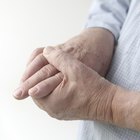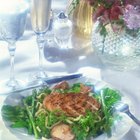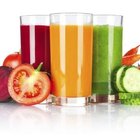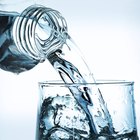
When someone in your family suffers from acid reflux (gastroesophageal reflux disease -- GERD), making several lifestyle changes may be in order. Often a diet change, along with medications that a doctor may prescribe, can help improve heartburn symptoms. Make a menu for acid reflux that will appeal to everyone, including the kids.
Breakfast
Try some hot oatmeal with a little skim milk. Because the fat in whole milk could make your symptoms worse, skim milk is your best choice. Skip the orange juice and other acidic juice choices -- if you want juice try some apple juice. Try low-fat cottage cheese or yogurt with fresh fruit, along with a bran muffin. An English muffin or toast with jelly and a wedge of cantaloupe would also make a good breakfast that shouldn't give anyone heartburn.
Lunch
Fill a low-fat tortilla with chicken or tuna salad made with fat-free mayonnaise. Make a chef's salad with strips of chicken breast, cucumbers, carrots, sprouts and light dressing. Add a few tortilla chips and a glass of skim milk and you should have a meal that will sit right in everyone's stomach. Try a black bean and vegetable soup with a wholegrain dinner roll for a nutritious and satisfying lunch.
Dinner
Choose lean cuts of meat such as chicken, turkey, fish and pork to serve the family. Prepare the meats using healthier methods of baking, broiling or braising. Deep-frying can make acid reflux worse. Add lots of fresh or cooked vegetables in stir-fries and salads and as side dishes. Always use low-fat dips and light dressings to avoid the GERD symptoms that come with fats. Try baked potatoes with low-fat sour cream, rice pilaf with fresh vegetables, and pasta tossed with a little olive oil and fresh basil. Don't forget to add fresh fruit to the dinner menu -- either colorful fruit salads, berry medleys or wedges of honeydew or watermelon.
Snacks
Eating smaller meals can help control acid reflux symptoms. Instead of eating three large meals, try eating smaller meals and adding one or two snacks in between. Keep the snacks light and nutritious, serving foods like a half bagel with fat-free cream cheese, a low-fat cereal bar and sugar-free non-fat yogurt. Don't forget fresh fruits such as bananas, papaya, pears and peaches.
Foods to Avoid
Chocolate can make acid reflux symptoms worse, so try to offer different dessert options. Carbonated beverages and caffeine can also contribute to more GERD symptoms. Avoid foods with high acidity levels, like tomatoes and citrus fruits. Steer clear of high fat foods like anything deep-fried, as well as spicy foods, alcohol and onions.
Related Articles

Can You Change Skin Tone with Food?
Snacks Compatible With a Diet for Gout

Is Cranberry Juice Good for Acne?

Foods That Are Good for Arthritis Pain ...

What Juices Are Good for Healing Acne ...

What Foods Provide Calcium D-Glucarate?

Menus for Toddlers & Five-Year-Olds for ...

Foods to Avoid to Prevent Gout

Does Soaking Cotton Balls in Milk Help ...

High Fiber & Protein Diet Menus

Grapefruit Skin Benefits

List of Gout Diet Foods

Nutrition Drinks for Diabetics

Foods That Keep You Awake During the Day

How to Reduce Acne Inflammation

The Best Fluids to Drink With COPD

Nutrition Information on Blueberries

The Core Plan Food List for Weight ...

How to Get a Pimple to Go Away Fast

How to keep your face smooth and ...
Writer Bio
Kathryn Hatter is a veteran home-school educator, as well as an accomplished gardener, quilter, crocheter, cook, decorator and digital graphics creator. As a regular contributor to Natural News, many of Hatter's Internet publications focus on natural health and parenting. Hatter has also had publication on home improvement websites such as Redbeacon.
Photo Credits
Jack Hollingsworth/Photodisc/Getty Images